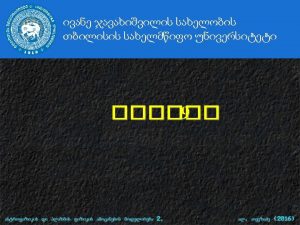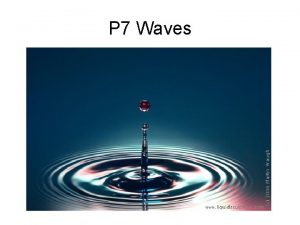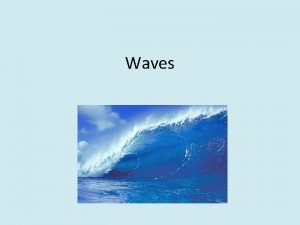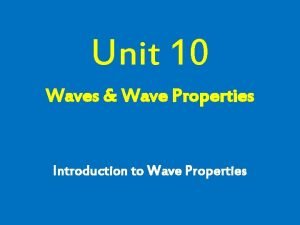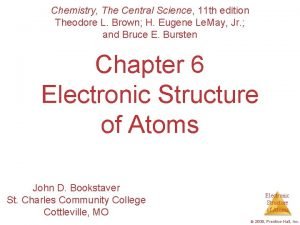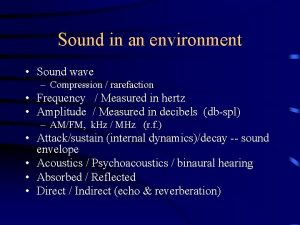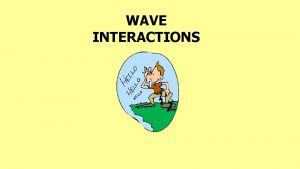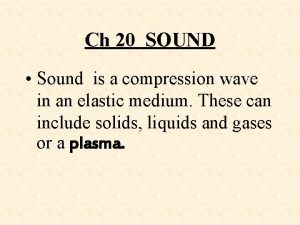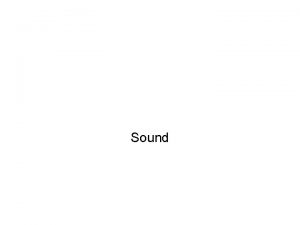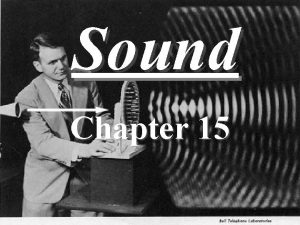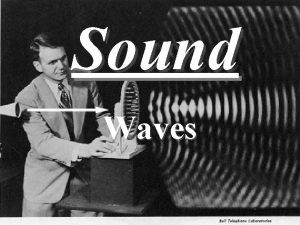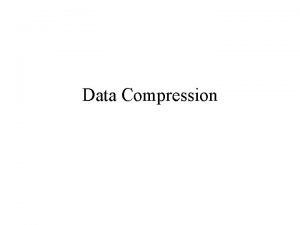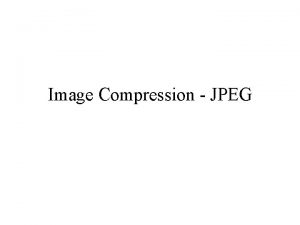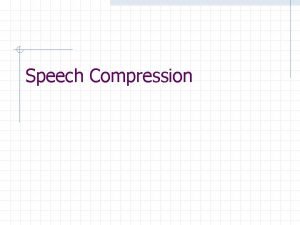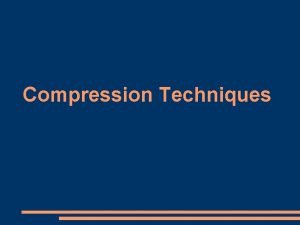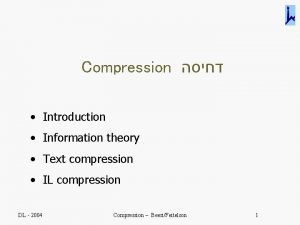The Sound Wave Elasticity Compression Rarefaction Frequency and



























- Slides: 27


The Sound Wave • Elasticity • Compression • Rarefaction

Frequency and Pitch • • • CPS (Cycles per Second) Hertz (Hz) 20 to 20, 000 Hz – 20 to 20 k. Hz (Hearing) Frequency = Pitch Octave (20/40 Hz, 40/80 Hz, etc. ) 10 Octaves (Hearing)

Frequencies • • 300 Hz to 3 k. Hz (most energy) Speech 20 to 80 Hz Low Bass 80 to 320 Hz Upper Bass 320 to 2, 560 Hz Midrange 2, 560 to 5, 120 Hz Upper Midrange 2. 5 k to 5 k Hz is 8 th Octave and Presence Range Emphasis 8 th Octave to in improve speech or lyrics intelligibility

Amplitude and Loudness • • Decibel d. B A 10 th of Bell Dynamic Range = Softest to Loudest sound d. B – SPL (Sound Pressure Level) 0 d. B = Threshold of hearing 30 d. B = Quite office 60 d. B = Average conversation 120 d. B = Tickle in the ear 140 d. B = Threshold of pain

Perceived Doubling of Sound • 3 to 10 d. B

The Healthy Ear • Outer ear • Middle ear • Inner ear


Outer Ear • Pinna • External Ear Canal • Capture the Sound

Middle Ear • • • Tympanum (ear drum) Malleus (hammer) Incus (anvil) Stapes (stirrup) Transducer and amplifier

Inner Ear • • Cochlea Fluid Hairs attached to nerve cells Transducer

Cochlea

Cochlea

Human Ear

Hearing Loss • • TTS Temporary Threshold Shift Auditory Fatigue Ears stuffed with cotton • Tinnitus / can foreshadow permanent TTS

Hearing Loss • 2, 400 to 4, 400 Hz most vulnerable range • Foam plug • Musician’s plug • Cotton balls

Etymotic Research Plugs

Frequency and Loudness • • • Equal Loudness Principle Equal Loudness Effect Fletcher-Munson Curve Fletcher-Munson Effect The softer the sound, the less linear we hear it. A low amplitude we hear less bass and treble than we do at higher amplitude.


Impedance • • Ohms Ω 500 and less = low Above 500 = high

Masking • Amplitude • Frequency • Attentive

Velocity • Through air 1, 130 feet per second @ sea level @ 70 degrees Fahrenheit • Water = 4, 800 feet per second • Wood = 11, 700 feet per second • Steel = 18, 000 feet per second

Phase • Electrical • Acoustical

Timbre • Tam burr • Tone quality

Sound Envelope • Four Stages • • Attack Initial Decay Sustain Release


 Whats a transverse wave
Whats a transverse wave Compression and rarefaction
Compression and rarefaction Rarefaction on a wave
Rarefaction on a wave Longitudianl waves
Longitudianl waves Difference between full wave and half wave rectifier
Difference between full wave and half wave rectifier Longitudinal vs transverse waves
Longitudinal vs transverse waves Full wave rectifier circuit
Full wave rectifier circuit Determining the arrival times between p-wave and s-wave
Determining the arrival times between p-wave and s-wave Mechanical and electromagnetic waves venn diagram
Mechanical and electromagnetic waves venn diagram Venn diagram mechanical and electromagnetic waves
Venn diagram mechanical and electromagnetic waves Wavelength formula triangle
Wavelength formula triangle Solid liquid gas
Solid liquid gas Frequency vs relative frequency
Frequency vs relative frequency Expected relative frequency
Expected relative frequency Average of sine wave
Average of sine wave How is linear frequency related to angular frequency?
How is linear frequency related to angular frequency? Relative frequency bar chart
Relative frequency bar chart Marginal frequency table
Marginal frequency table Relative frequency two way table
Relative frequency two way table Rhythmic disturbances that carry energy
Rhythmic disturbances that carry energy Formula for frequency of a wave
Formula for frequency of a wave Which wave has the lowest frequency
Which wave has the lowest frequency Wavelength of red light
Wavelength of red light Which wave has the highest frequency?
Which wave has the highest frequency? Radiation spectrum
Radiation spectrum Sound waves are electromagnetic waves. true false
Sound waves are electromagnetic waves. true false Carbon dioxide temperature
Carbon dioxide temperature Half wave rectifier definition
Half wave rectifier definition


